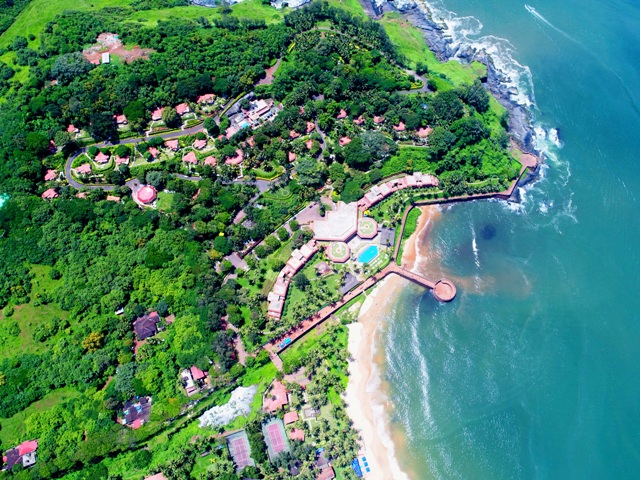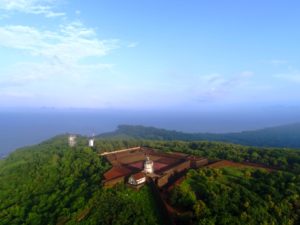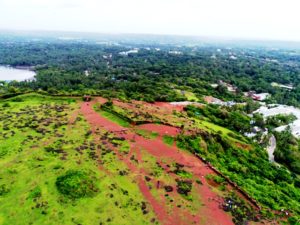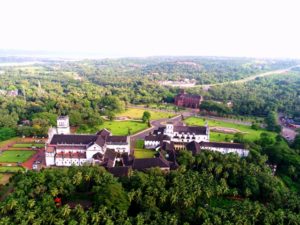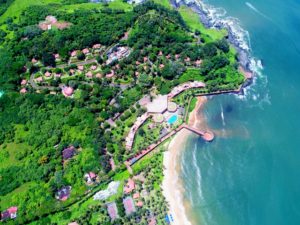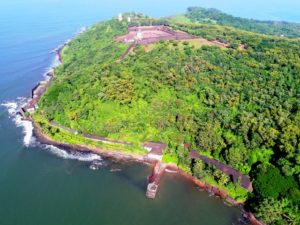At the O’Coqueiro in Alto Porvorim I sat exactly where the ‘Bikini Killer’ did over 30 years ago enjoying what would be his last meal as a free man for a long time. Hatchand Bhaonani Gurumukh Charles Sobhraj, widely known by the last two names, might have been celebrating his latest exploit. Or he was serenading somebody – one led to the other, invariably. He was so immersed in his favourite curry, the Chicken Cafreal, that he didn’t notice the posse close in on him. Wanted for the murder of at least 20 western women travellers during the 70s across Southeast Asia, his ploy was simple: apply ample charm and promise adventure largely aided by drugs. With at least a couple of his victims turning up in bikinis the name stuck. But he had many other names as well like ‘The Serpent’ for his prowess to slither out of prisons. Knowing that you are sharing history, however infamous it is, makes you want to know more: I looked up Chicken Cafreal.
As with most things meaty, here too it is the masala. The preparation doesn’t have a lot of gravy but still works with rice like a charm. The masala made with green chillies, coriander, ginger, garlic, couscous, tamarind and spices cinnamon, turmeric, cumin and cloves is spread over the chicken and kept overnight. The resultant aroma is so enticing that some sites devoted to cooking even call it a ‘date night recipe’ and ‘celebratory dish’. So it is about Chicken Cafreal and Sobhraj. Later that evening talking to artist and founder of Museum of Goa, Subodh Kerkar, I came to know that the dish itself was brought to Indian shores by the African slaves whom their Portuguese masters insultingly called ‘Kafirs’ meaning non-believers and idolators. Hence the name.
Taking up a recommendation of a heritage homestay we had landed in Sinquerim in North Goa. Don’t get me wrong but this is a great place – atmospheric churches, candy-coloured little houses with curved stairways leading to porticos supported by Gothic colonnades, hardworking fisherfolk, shops selling feni in funky bottles, elegant Mrs Fonsecas (or how I imagined Miranda’s Miss Fonseca would be today) in dapper dresses, great eateries with live music and some fabulous forts. The region itself is cupped by the Arabian Sea and the Mandovi River. The Kingfisher Villa is here, facing the Candolim Beach, once owned by the disgraced business tycoon Vijay Mallya. It now belongs to actor and businessman Sachiin Joshi who holds the rights to Playboy ventures in India. Definitely good news for the oomphy sirens whose spirits continue to cling to the kitschy walls and cricketer Chris Gayle who never seem to have enough. But what North Goa lacks are good beaches – a paucity that will wrack you especially if you have been to the South. We gave up looking for a secluded spot by the sea within half a day or as soon as we reached Siridao Beach. There a bunch of cows squatted on the sand casting a weary look our way. Needless to say, our grooves and bikinis returned to Delhi sands-free.
One of the most enduring forts of the colonial military history is here – the Fort Aguada. While it is known as the ‘fort in Dil Chahta Hain’ in pop culture, it is neither grand like Amber or Alwar Forts nor rending like Ater; just a no-nonsense structure, the way it was supposed to be. Built in 1612 (a signboard on site says 1606) along an estuary of the Mandovi, this remains the only fort un-invaded during the 450 years of Portuguese rule in Goa. The walls, 5-metre high and 1.3 metres wide, are vertically sloping which serves to deflect cannons and gunshots. They are filled with rubble which further reinforced them. The fort derives its name from ‘agua’ meaning ‘water’ as there were several freshwater wells in the area which supplied water to passing ships. A wide moat traces the fort which, when filled with water, makes access further difficult. Within the vicinity of the fort are its original lighthouse built in 1864 and its more modern replacement from 1976.
A leafy road winds all the way down to the base of the fort flanking the sea. Here is a low-lying white gulag hugging the foot of the hill which used to be the biggest prison in Goa. It is now slated to reopen next year as a prestigious museum dedicated to the state’s culture and art and role in the national freedom struggle. The only work currently on site was a surly-faced minion who slyly took mobile photographs of my aerial camera and repeatedly tried to call somebody ostensibly his boss. I just hoped it wasn’t Jimmy Razdan – at least the name supplied to me by the Nepali sentry – not your rando fintech billionaire but the good old diamond dealer who owned a palace set further up the road.
The Sinquerim Fort is actually an extension of the Aguada Fort and was within 5 minutes of where we stayed. Built during the same period as the Aguada Fort, the main structure is a bastion that juts out into the sea like a gigantic keyhole; ships used to anchor on both sides of this fort.
Another sun-kissed structure in the area was the St Lawrence Church, saint of the sailors. This was apparently built by the Portuguese nearby the Aguada Fort to prevent enemy fire from close quarters. May the Almighty take the bullet, one could imagine the commander instructing the architect with a wicked twinkle in his eyes. Soon as we drove in, a harried worshipper scurried over to inform us that the church gates would be closed soon. How I wished for a cannonball!
Further south is the red laterite Chapora Fort. We passed through the most commercialised stretches of Calangute and Baga, Anjuna and Vagator to reach this early 17th century Portuguese bastion built atop a Muslim structure – to the south of the fort, one can still see the remains of Muslim tombstones. Sporraned tourists in selfie-spree dot the rest of the area. I nonchalantly listened in as a Keralite family debated amongst themselves whether they should approach me for an aerial group photograph. From the top Vagator and Anjuna look like tent cities – which they mostly are.
I exchanged places with Sobhraj on our way to Panaji, Goa capital. Ten kilometres east of Panaji, is Old Goa or Velha Goa, a heritage offensive where one historic building segues into another. The regal church and convent of St Francis of Assisi ensconced within lush green acreages. The only grander one I could remember was the Sistine. The church was first established as a small chapel by eight Franciscan friars in 1517; the current structure was finished in 1661. There are two octagonal towers on both sides of the three-tiered structure and the interiors feature gilded artworks and paintings from the life of the saint. The convent next to the church houses the Archaeological Survey of India museum with sculptures, paintings and artefacts chronicling the vibrant history of the state. The Se Cathedral, Bom Jesus Basilica, Santa Monica Nunnery are the other important monuments in the area. If you are looking for a quiet getaway from the religious buzz, probably to return later, hop into the Chapel of St Catherine. This quaint little place was built in 1510 to commemorate the entry of General Alfonso de Albuquerque into the city on the day of St Catherine’s feast. The laterite stone interiors are devoid of furniture, the only decoration being the ornate candelabra from centuries ago. Succumbing to my urge for the haptic, I re-arranged these exquisite pieces next to the empty niche on the main altar.
Here I was, changing places in history.
Again.
An edited version of the travelogue was published in the Sunday Standard supplement of the New Indian Express.


